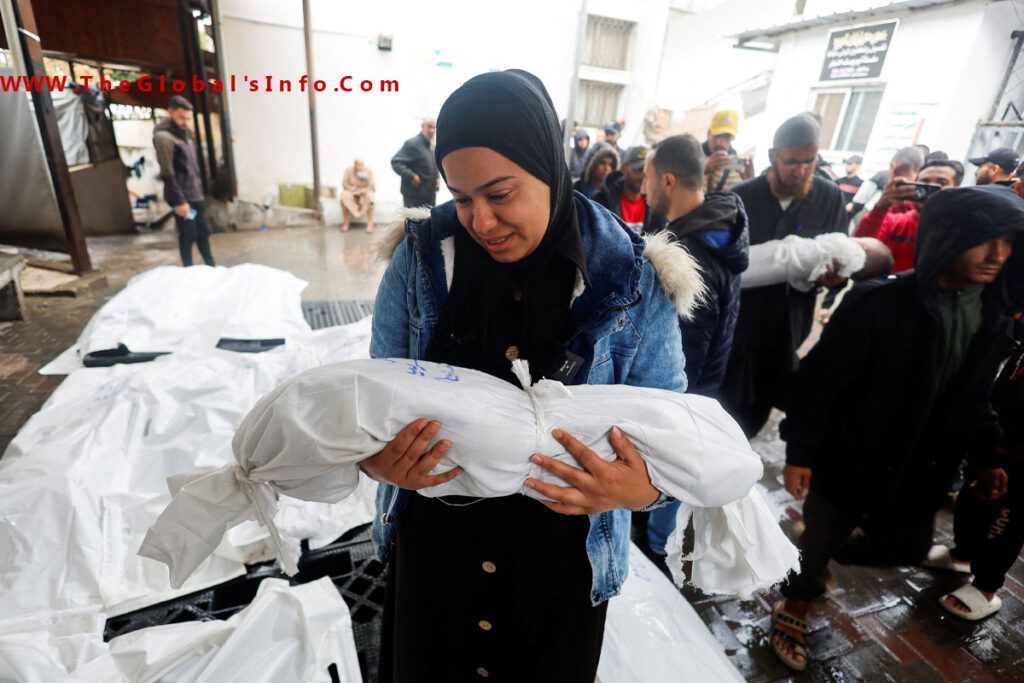Border Tensions Rise: Rafah Crossing Faces Strain Amidst Political Unrest
The heart of the Middle East, where geopolitical fault lines intersect, Rafah Crossing has long been a symbol of both connectivity and division. Situated between Gaza and Egypt, this border crossing has historically served as a lifeline for Palestinians, facilitating the movement of people and goods in and out of the besieged Gaza Strip. However, recent developments have seen Rafah Crossing thrust into the spotlight once again, but this time amidst escalating political unrest and simmering tensions.
The situation at Rafah Crossing has been exacerbated by a confluence of factors, chief among them being the ongoing political instability in the region. In recent months, the Gaza Strip has been rocked by internal strife, with rival factions vying for power and influence. This internal discord has spilled over into neighboring Egypt, where authorities have grappled with their own set of challenges, including security concerns and economic woes.
Against this backdrop of uncertainty, Rafah Crossing has become a focal point for competing interests and agendas. On one hand, there are those who seek to exploit the situation for their own political gain, using the crossing as a bargaining chip in broader power struggles. On the other hand, there are ordinary Palestinians who depend on Rafah Crossing for essential services such as medical treatment, education, and family visits. For them, the crossing represents not just a physical barrier, but also a gateway to the outside world and a source of hope amidst despair.
Amidst these competing pressures, Rafah Crossing has found itself under increasing strain. Delays and closures have become more frequent, exacerbating the humanitarian crisis in Gaza and deepening the sense of isolation felt by its residents. The situation is further compounded by the broader regional dynamics at play, including the blockade imposed on Gaza by Israel and the intermittent hostilities between Palestinian factions and Israeli forces.
In response to these challenges, efforts have been made to ease the strain on Rafah Crossing and alleviate the suffering of those caught in the crossfire. International organizations and diplomatic actors have called for greater cooperation and dialogue between all parties involved, emphasizing the need for humanitarian considerations to take precedence over political calculations. At the same time, there have been calls for broader structural reforms aimed at addressing the underlying causes of the crisis and promoting long-term stability in the region.
Yet, finding a sustainable solution to the plight of Rafah Crossing remains an uphill battle. The entrenched interests and entrenched animosities that have come to define the Israeli-Palestinian conflict show little sign of abating, while the broader regional dynamics continue to shift and evolve. In this volatile landscape, Rafah Crossing stands as a stark reminder of the human cost of political brinkmanship and the urgent need for concerted action to address the root causes of conflict and insecurity.
As tensions continue to rise and the situation at Rafah Crossing remains precarious, the international community must redouble its efforts to promote dialogue, foster cooperation, and uphold the rights and dignity of all those affected by the crisis. Only through a collective commitment to peace, justice, and reconciliation can the cycle of violence and suffering be broken, and Rafah Crossing once again become a symbol of hope and resilience in a troubled region.
Rafah Crossing: A Vital Lifeline or a Flashpoint for Conflict?
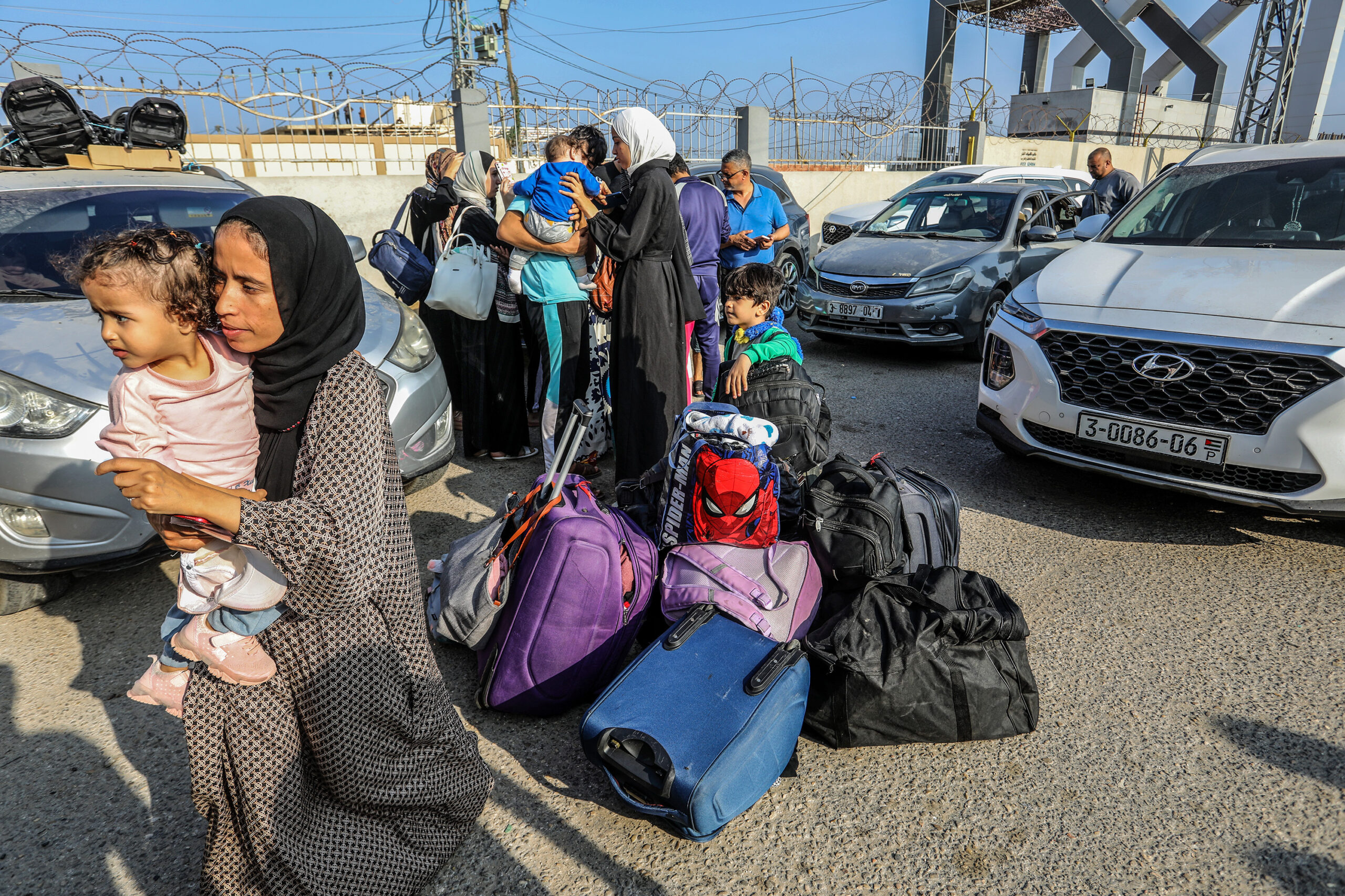
Rafah Crossing, nestled between Gaza and Egypt, embodies a complex duality. For many, it serves as a vital lifeline, offering a gateway to the outside world for the beleaguered residents of the Gaza Strip. Yet, it also stands as a potent symbol of the geopolitical fault lines and simmering tensions that define the Middle East. In recent years, Rafah Crossing has oscillated between being a conduit for hope and a flashpoint for conflict, reflecting the intricate interplay of regional dynamics and local realities.
At its core, Rafah Crossing is more than just a border checkpoint; it represents the aspirations and struggles of the Palestinian people. For the residents of Gaza, who have endured years of blockade and isolation, Rafah Crossing is often their only link to the outside world. It is through this crossing that they access essential services such as medical treatment, education, and commerce. For families separated by political borders, Rafah Crossing offers a rare opportunity for reunion and connection. In this sense, Rafah Crossing is undeniably a vital lifeline, providing a semblance of normalcy in the midst of adversity.
However, Rafah Crossing is also a focal point for competing interests and geopolitical rivalries. The border between Gaza and Egypt is not just a physical divide but a symbol of broader political fault lines. Egypt, wary of security threats emanating from Gaza, has at times tightened restrictions at Rafah Crossing, citing concerns about smuggling and extremism. Meanwhile, Israel’s blockade of Gaza has contributed to the enclave’s isolation and dependence on external aid. As a result, Rafah Crossing has become enmeshed in a web of regional geopolitics, subject to the whims of various actors with competing agendas.
The situation at Rafah Crossing is further complicated by internal Palestinian dynamics. Rivalry between Hamas, which governs Gaza, and the Palestinian Authority, which controls the West Bank, has often spilled over into disputes over control of border crossings. In the past, such disputes have led to closures and restrictions, exacerbating the humanitarian crisis in Gaza and deepening the sense of despair among its residents.
Against this backdrop, Rafah Crossing has become a potential flashpoint for conflict. The ebb and flow of tensions in the region are often reflected in the status of the crossing, with closures and restrictions serving as barometers of broader political dynamics. Incidents at the crossing have occasionally escalated into larger confrontations, underscoring the volatile nature of the situation and the potential for escalation.
In light of these challenges, finding a sustainable solution for Rafah Crossing remains an urgent priority. Greater international engagement and diplomatic efforts are needed to address the underlying causes of the crisis and promote stability in the region. This includes addressing the legitimate security concerns of Egypt while also upholding the rights and dignity of the Palestinian people. Ultimately, Rafah Crossing must be transformed from a potential flashpoint for conflict into a symbol of cooperation and connectivity, reflecting the aspirations of all those who pass through its gates. Only then can it truly fulfill its potential as a vital lifeline for the people of Gaza and a beacon of hope in a troubled region.
Security Concerns Escalate: Rafah Border Under Scrutiny
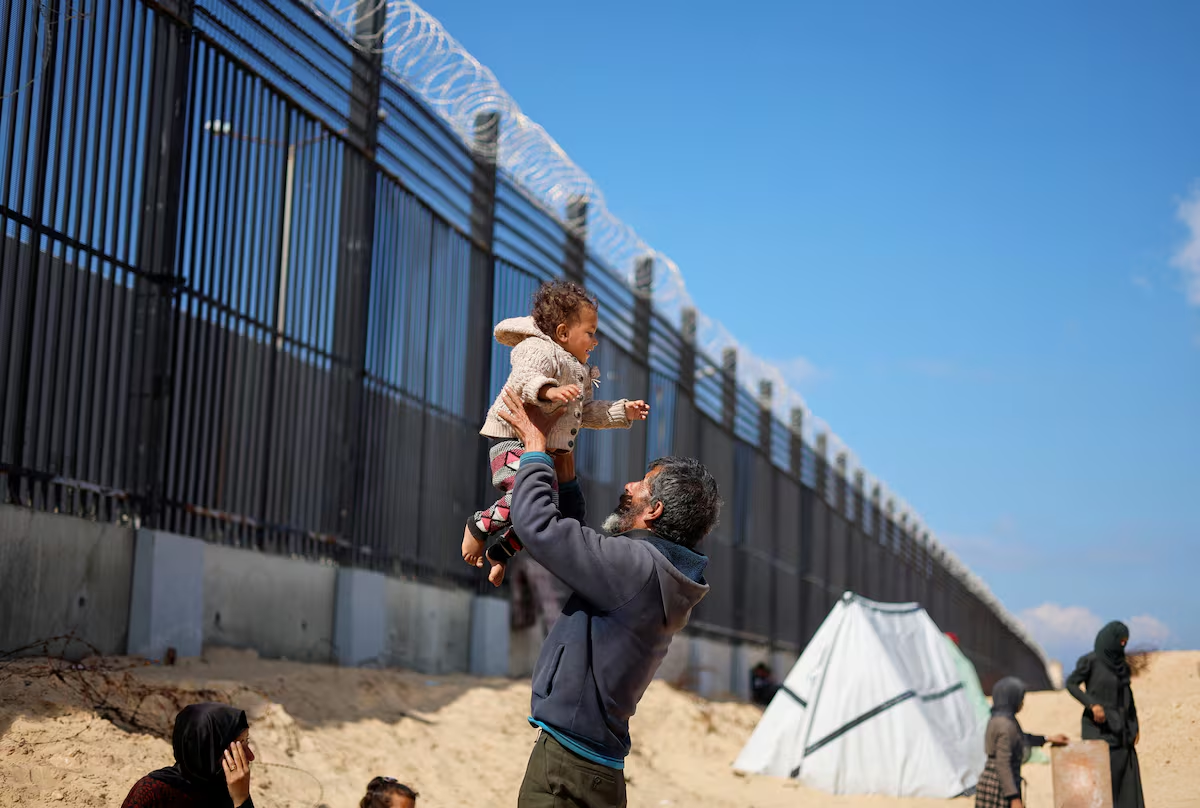
The Rafah border crossing, situated between Gaza and Egypt, has long been a focal point for geopolitical tensions and security concerns in the Middle East. In recent times, these concerns have escalated, placing the crossing under heightened scrutiny and raising questions about its role in regional stability.
At the heart of the security concerns surrounding Rafah border is the threat of illicit activities, including smuggling and the movement of weapons and militants. The porous nature of the border, coupled with the political instability in the region, has made it a potential hotspot for nefarious actors seeking to exploit vulnerabilities for their own gain.
Egypt, in particular, has expressed grave concerns about security threats emanating from Gaza and has taken measures to tighten control over the Rafah crossing. This has included periodic closures and restrictions on movement, aimed at preventing the infiltration of militants and curbing the flow of illicit goods. However, these measures have also had a significant humanitarian impact, exacerbating the already dire living conditions in Gaza and deepening the sense of isolation felt by its residents.
The security concerns at Rafah border are further compounded by the broader regional dynamics, including the ongoing Israeli-Palestinian conflict and the volatile situation in neighboring countries such as Syria and Libya. The flow of refugees and militants across borders, coupled with the proliferation of weapons and extremist ideologies, has created a complex security environment that requires careful management and coordination.
In response to these challenges, efforts have been made to enhance security measures at the Rafah crossing and improve coordination between relevant authorities. This has included the deployment of advanced technology for border surveillance, as well as increased intelligence sharing and cooperation between Egypt and other regional actors.
However, addressing the security concerns at Rafah border requires more than just technological solutions; it also requires addressing the underlying political and socio-economic factors driving instability in the region. This includes addressing the root causes of conflict and addressing the grievances of marginalized communities, including the residents of Gaza.
Moreover, any security measures implemented at Rafah border must be balanced with respect for human rights and international law. The rights of Palestinian civilians must be upheld, and measures should be taken to minimize the humanitarian impact of security restrictions on the civilian population.
In the long term, achieving lasting security at Rafah border will require a comprehensive approach that addresses the underlying drivers of conflict and instability in the region. This includes promoting economic development and political reform in Gaza, as well as fostering greater cooperation and dialogue between all parties involved.
The security concerns at Rafah border are a symptom of broader regional challenges that require concerted international action and cooperation to address. By addressing the root causes of conflict and insecurity, and by promoting dialogue and cooperation between all stakeholders, it is possible to achieve lasting peace and stability in the region, ensuring that Rafah crossing can fulfill its role as a gateway to opportunity rather than a flashpoint for conflict.
Rafah Border: A Gateway to Hope or Despair for Palestinians?
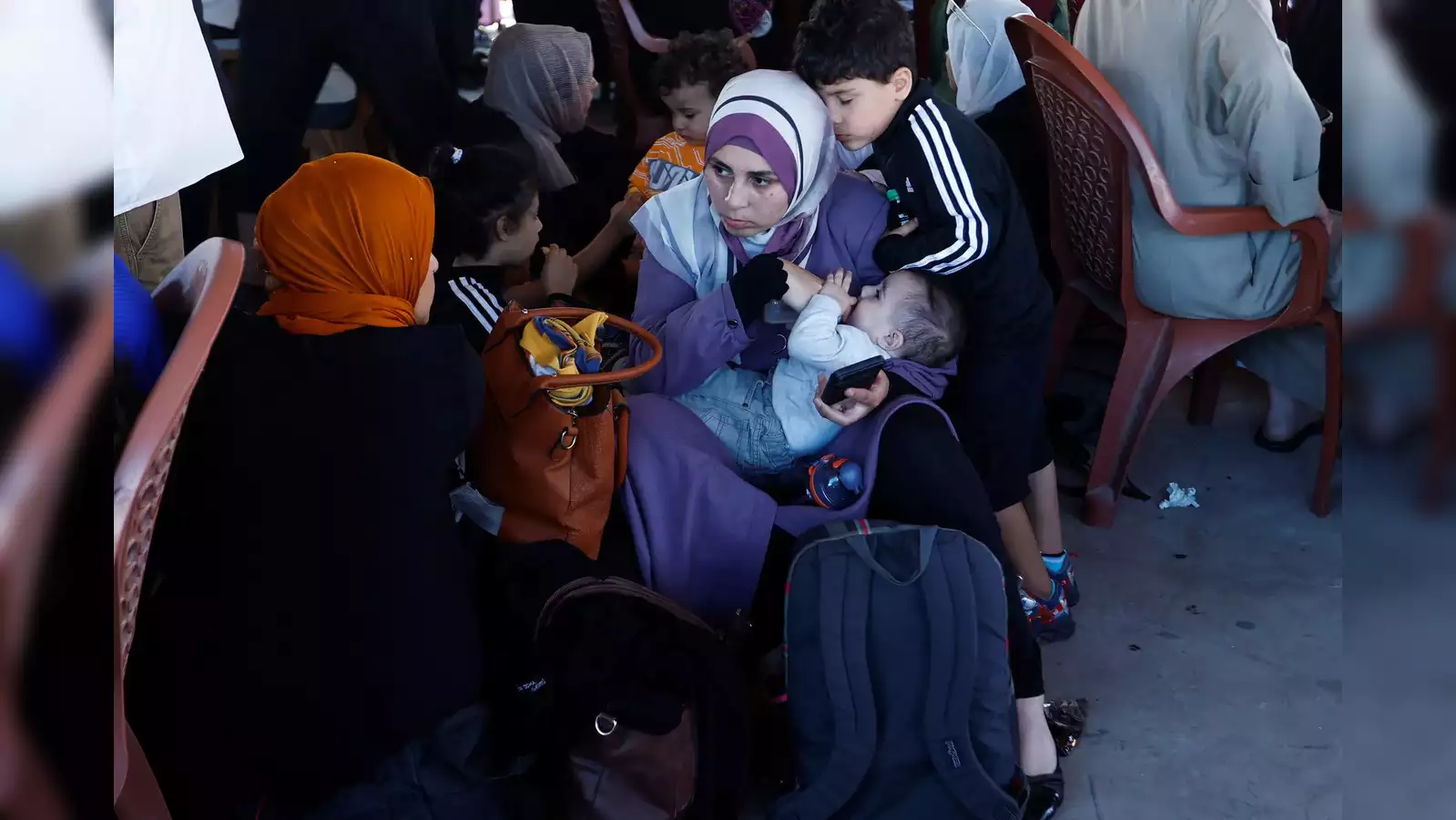
The complex tapestry of the Israeli-Palestinian conflict, the Rafah border crossing stands as a symbolic gateway between hope and despair for Palestinians. Situated between Gaza and Egypt, Rafah represents not just a physical barrier, but a threshold between opportunity and adversity, where the aspirations of a besieged population collide with the harsh realities of political turmoil and regional instability.
For many Palestinians, Rafah border embodies the promise of freedom and connectivity. Gaza, with its densely populated confines and economic hardships exacerbated by an Israeli blockade, relies heavily on Rafah as its primary link to the outside world. It is through this crossing that Palestinians access essential services, seek medical treatment, pursue education opportunities, and reunite with loved ones separated by political borders. In this sense, Rafah represents a lifeline, offering a glimmer of hope amidst the isolation and hardship imposed by the blockade.
However, Rafah border is also a locus of despair, where the dreams of Palestinians often collide with the harsh realities of geopolitics and security concerns. The crossing is subject to frequent closures and restrictions imposed by Egyptian and Israeli authorities, citing security threats and political tensions. These closures exacerbate the humanitarian crisis in Gaza, deepening the sense of isolation and despair felt by its residents. Families are torn apart, patients are denied access to life-saving medical care, and economic opportunities are stifled, all under the shadow of political brinkmanship and regional rivalries.
Moreover, Rafah border has become a flashpoint for conflict, where the aspirations of Palestinians for freedom and self-determination clash with the security concerns of neighboring states. Egypt, in particular, views Gaza as a potential security threat and has taken measures to tighten control over the crossing, leading to clashes and tensions with Palestinian factions. Meanwhile, Israel’s blockade of Gaza has contributed to the enclave’s economic stagnation and dependence on external aid, further exacerbating the sense of despair among its residents.
In the face of these challenges, Palestinians at Rafah border are caught in a perpetual cycle of hope and despair, where the promise of freedom is often overshadowed by the harsh realities of political realities and regional dynamics. Efforts to alleviate the suffering of Gaza’s residents, including calls for lifting the blockade and easing restrictions at Rafah border, have been met with limited success, as political considerations and security concerns continue to take precedence over humanitarian imperatives.
Yet, amidst the despair, there are glimmers of hope. International solidarity and support for the Palestinian cause remain strong, with calls for justice and recognition of Palestinian rights echoing around the world. Efforts to promote dialogue and cooperation between all parties involved, including Egypt, Israel, and Palestinian factions, offer a ray of hope for a peaceful resolution to the conflict.
The fate of Rafah border and its impact on Palestinians hinges on the willingness of all stakeholders to prioritize human dignity and rights over political considerations and security concerns. Only through a collective commitment to justice, dialogue, and reconciliation can Rafah border truly become a gateway to hope for Palestinians, rather than a symbol of despair.
Rafah Crossing: Geopolitical Chess Piece in Middle East Dynamics
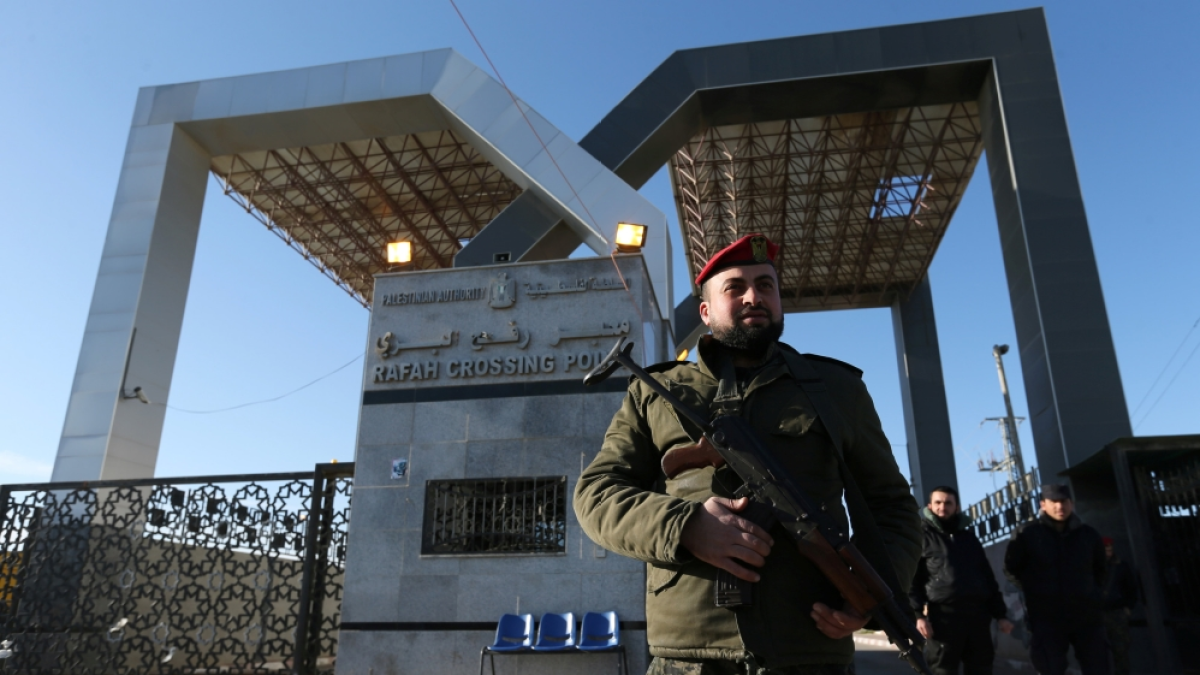
In the intricate geopolitical landscape of the Middle East, Rafah Crossing emerges as a pivotal chess piece, strategically positioned between Gaza and Egypt. Its significance transcends mere physical geography; it symbolizes the intersecting interests and power struggles that shape regional dynamics. As a gateway between two territories fraught with political complexities, Rafah Crossing is both a conduit for connectivity and a pawn in the broader geopolitical game.
At its core, Rafah Crossing embodies the Palestinian quest for freedom and sovereignty. Situated at the southern border of the Gaza Strip, it serves as a vital link between Palestinians in Gaza and the outside world. For the besieged residents of Gaza, Rafah represents a lifeline, providing access to essential goods, services, and opportunities that are otherwise restricted by Israel’s blockade. It is through this crossing that Palestinians seek medical treatment, pursue educational opportunities, and maintain familial and social ties.
However, Rafah Crossing is also a focal point for competing regional interests and rivalries. Egypt, as the custodian of the crossing on its side, plays a significant role in determining its accessibility and operation. Over the years, Egypt’s approach to Rafah has been shaped by a complex calculus of security concerns, political considerations, and regional dynamics. Fearful of the potential spillover of extremism and instability from Gaza, Egypt has at times imposed strict restrictions on the movement of people and goods through Rafah, exacerbating the humanitarian crisis in Gaza and deepening the sense of isolation felt by its residents.
Moreover, Rafah Crossing is not immune to broader regional dynamics, including the Israeli-Palestinian conflict and the shifting alliances and rivalries that define the Middle East. The crossing has been subject to periodic closures and restrictions imposed by both Israel and Egypt, often in response to security incidents or political tensions. Such closures further exacerbate the humanitarian situation in Gaza, underscoring the extent to which Rafah Crossing is entangled in broader geopolitical maneuvers.
In recent years, Rafah Crossing has also become a point of contention between rival Palestinian factions. Control over the crossing has been a source of friction between Hamas, which governs Gaza, and the Palestinian Authority, which controls the West Bank. Disputes over control and management of Rafah Crossing have led to closures and restrictions, exacerbating the humanitarian crisis in Gaza and deepening the political divide between Palestinian factions.
Despite these challenges, Rafah Crossing remains a symbol of resilience and determination for the Palestinian people. Efforts to ease restrictions and facilitate movement through the crossing, including international mediation and diplomatic initiatives, offer a glimmer of hope for the residents of Gaza. Moreover, calls for a comprehensive resolution to the Israeli-Palestinian conflict, including the lifting of the blockade on Gaza and the establishment of an independent Palestinian state, underscore the urgency of addressing the underlying causes of the crisis.
In the broader context of Middle East dynamics, Rafah Crossing serves as a microcosm of the region’s complexities and contradictions. It embodies the aspirations and struggles of the Palestinian people, while also reflecting the competing interests and rivalries that shape regional politics. Ultimately, the fate of Rafah Crossing will depend on the ability of all stakeholders to prioritize the well-being and rights of the Palestinian people over narrow political considerations and strategic calculations. Only through a collective commitment to justice, peace, and cooperation can Rafah Crossing cease to be a mere chess piece and become a symbol of hope and connectivity for all those who pass through its gates.
Humanitarian Crisis Looms: Challenges at Rafah Border Mount
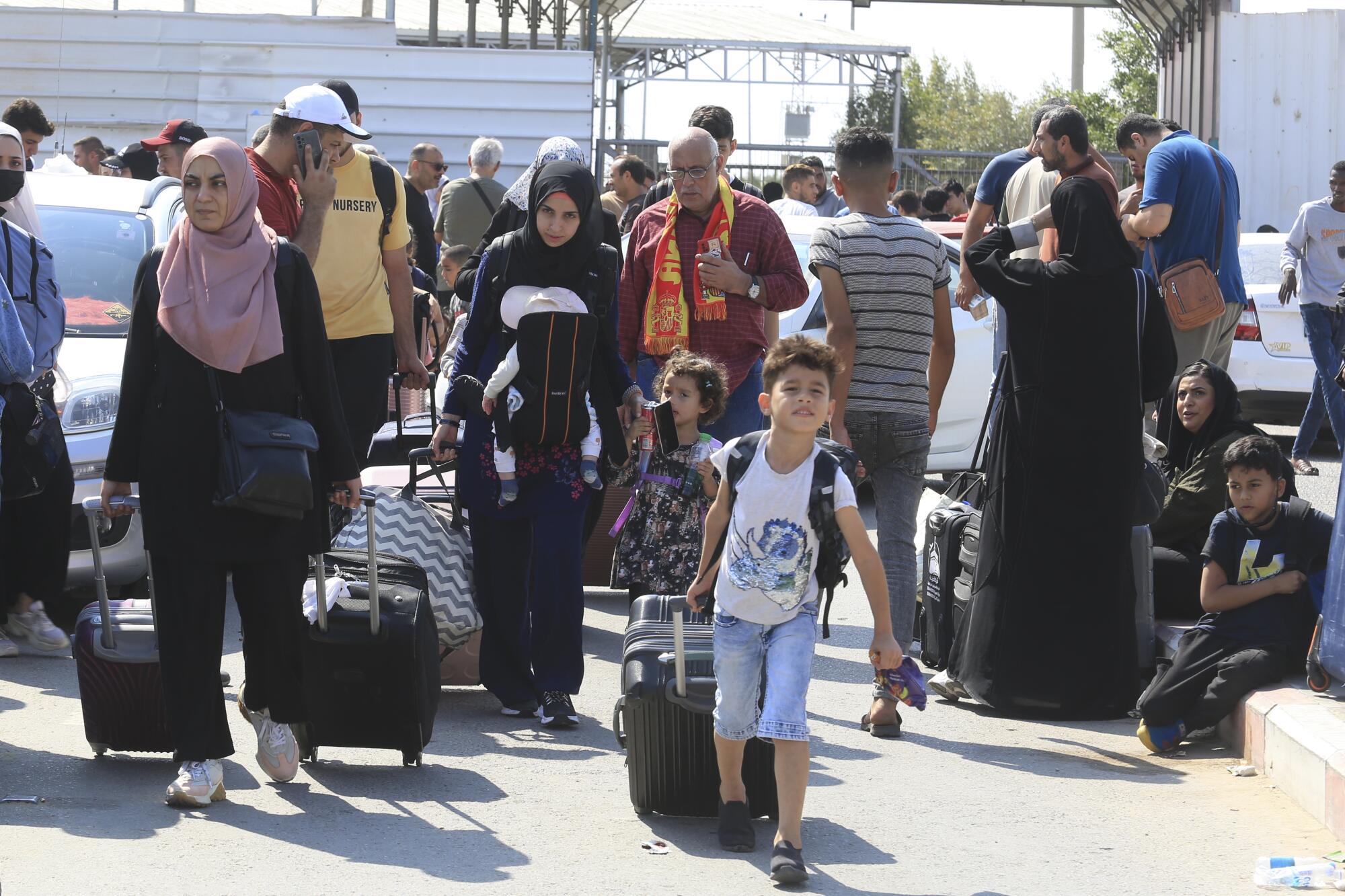
As tensions escalate and geopolitical dynamics shift in the Middle East, Rafah Border, nestled between Gaza and Egypt, finds itself at the epicenter of a mounting humanitarian crisis. Long considered a lifeline for the beleaguered residents of Gaza, the crossing is now facing unprecedented challenges, exacerbating the already dire situation in the besieged enclave.
Rafah Border has historically served as Gaza’s primary link to the outside world, providing essential access to goods, services, and opportunities. For Palestinians living under the shadow of Israel’s blockade, Rafah represents a crucial gateway to medical treatment, education, and family connections. However, recent developments have placed immense strain on the crossing, threatening to plunge Gaza into deeper despair.
One of the primary challenges facing Rafah Border is the tightening of restrictions by Egyptian authorities. Concerned about security threats emanating from Gaza, Egypt has imposed stringent measures to regulate the movement of people and goods through the crossing. These restrictions have led to periodic closures and limited operating hours, severely curtailing the flow of humanitarian aid and exacerbating the humanitarian crisis in Gaza.
The restrictions at Rafah Border have had far-reaching consequences for the residents of Gaza, many of whom rely on the crossing for essential services. Patients seeking medical treatment outside Gaza are often denied access, leading to delays in care and worsening health outcomes. Students pursuing education opportunities abroad face barriers to travel, hindering their academic and professional development. Families separated by political borders are unable to reunite, perpetuating the cycle of isolation and despair.
Moreover, the restrictions at Rafah Border have exacerbated the economic hardships facing Gaza’s residents. With limited access to external markets and opportunities for trade, Gaza’s economy has stagnated, leading to high unemployment rates and widespread poverty. The closure of Rafah Border has further hindered the movement of goods and people, stifling economic activity and deepening the enclave’s dependency on external aid.
In addition to the challenges posed by Egyptian restrictions, Rafah Border is also subject to broader regional dynamics and geopolitical tensions. The ongoing Israeli-Palestinian conflict, coupled with the shifting alliances and rivalries in the region, has further complicated efforts to address the humanitarian crisis in Gaza. Periodic escalations of violence and political brinkmanship have only served to exacerbate the suffering of Gaza’s residents, leaving Rafah Border caught in the crossfire.
Addressing the humanitarian crisis at Rafah Border requires a concerted effort by the international community to prioritize the well-being and rights of the Palestinian people. Calls for the lifting of the blockade on Gaza, the easing of restrictions at Rafah Border, and the promotion of dialogue and cooperation between all parties involved are essential steps toward alleviating the suffering of Gaza’s residents.
Furthermore, there is a pressing need for increased humanitarian assistance and support for Gaza’s infrastructure and development projects. By addressing the root causes of the crisis and investing in long-term solutions, it is possible to prevent further deterioration at Rafah Border and ensure a brighter future for the people of Gaza.
In the face of mounting challenges, Rafah Border stands as a stark reminder of the human cost of political conflict and regional instability. Only through collective action and solidarity can the international community hope to address the humanitarian crisis looming at Rafah Border and bring relief to the millions of Palestinians trapped in Gaza’s cycle of despair.
Humanitarian Crisis Looms: Challenges at Rafah Border Mount
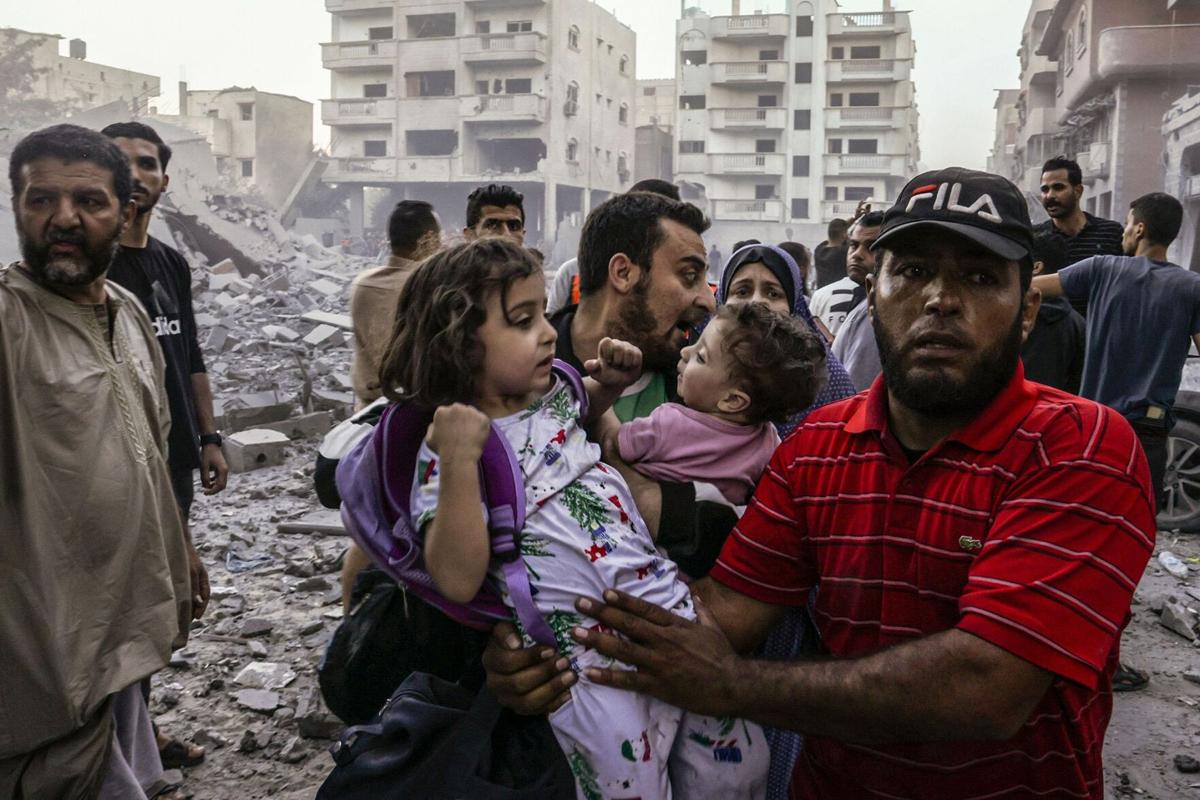
The Rafah Border crossing, serving as a crucial connection point between Gaza and Egypt, is currently at the forefront of a looming humanitarian crisis. Over the years, Rafah has been a lifeline for Gazans, offering a vital link to the outside world amid the constraints of the Israeli blockade. However, recent developments have intensified challenges at the crossing, exacerbating the already dire situation in Gaza.
At the heart of the crisis are mounting restrictions imposed by Egyptian authorities, driven primarily by security concerns. Egypt’s efforts to curb smuggling and prevent the infiltration of militants have led to increased scrutiny and tighter controls at Rafah Border. Consequently, the movement of people and goods through the crossing has become more limited and unpredictable, significantly impacting the lives of Gazans.
One of the most pressing consequences of these restrictions is the impediment to accessing essential medical care. Many Gazans rely on Rafah to travel for specialized treatment not available in the enclave. However, the tightened controls have resulted in delays and denials of medical permits, leaving patients stranded without proper care. This has dire implications for individuals with chronic illnesses or urgent medical needs, amplifying their suffering and endangering lives.
Education is another area profoundly affected by the challenges at Rafah Border. Students from Gaza often seek educational opportunities abroad, but the restrictions have hindered their ability to travel. Scholarships and study programs become unattainable dreams, hindering academic and personal growth. The loss of these opportunities perpetuates a cycle of limited prospects and dashed aspirations for Gazan youth, further exacerbating the region’s socio-economic woes.
Families torn apart by political borders also bear the brunt of Rafah’s mounting challenges. The crossing represents their only hope for reunification, yet bureaucratic hurdles and arbitrary closures frequently disrupt their plans. Separated by circumstances beyond their control, families endure prolonged periods of anguish and uncertainty, their bonds strained by the barriers imposed at Rafah Border.
Economically, Gaza faces profound hardship due to the constraints at Rafah. The crossing serves as a crucial channel for trade and commerce, but stringent regulations impede the flow of goods and impede economic growth. Business owners struggle to sustain their enterprises, while workers face dwindling job opportunities in an economy constrained by isolation and dependency. The resulting poverty and unemployment only deepen the region’s humanitarian crisis, leaving Gazans trapped in a cycle of deprivation and despair.
Beyond the immediate impacts on individuals and communities, the mounting challenges at Rafah Border underscore broader systemic issues that perpetuate the humanitarian crisis in Gaza. The blockade imposed by Israel, compounded by regional tensions and political dynamics, creates a volatile environment that exacerbates the suffering of Gazans. Addressing the crisis at Rafah necessitates not only immediate relief measures but also sustained efforts to address its underlying causes and promote long-term solutions.
In response to the mounting challenges at Rafah Border, urgent action is needed to alleviate the suffering of Gazans and prevent further escalation of the humanitarian crisis. This includes calls for greater international pressure to ease restrictions at the crossing, improve access to essential services, and facilitate humanitarian aid delivery. Moreover, efforts to address the root causes of the crisis, including the lifting of the blockade and the promotion of dialogue and reconciliation, are essential for achieving lasting peace and stability in Gaza.
As the challenges at Rafah Border continue to mount, the international community must remain steadfast in its commitment to the well-being and rights of the Palestinian people. Only through concerted action and solidarity can the looming humanitarian crisis be averted, and hope restored to the millions of Gazans caught in its grip.
Rafah Gate: Key Player in Regional Diplomacy Amidst Uncertainty
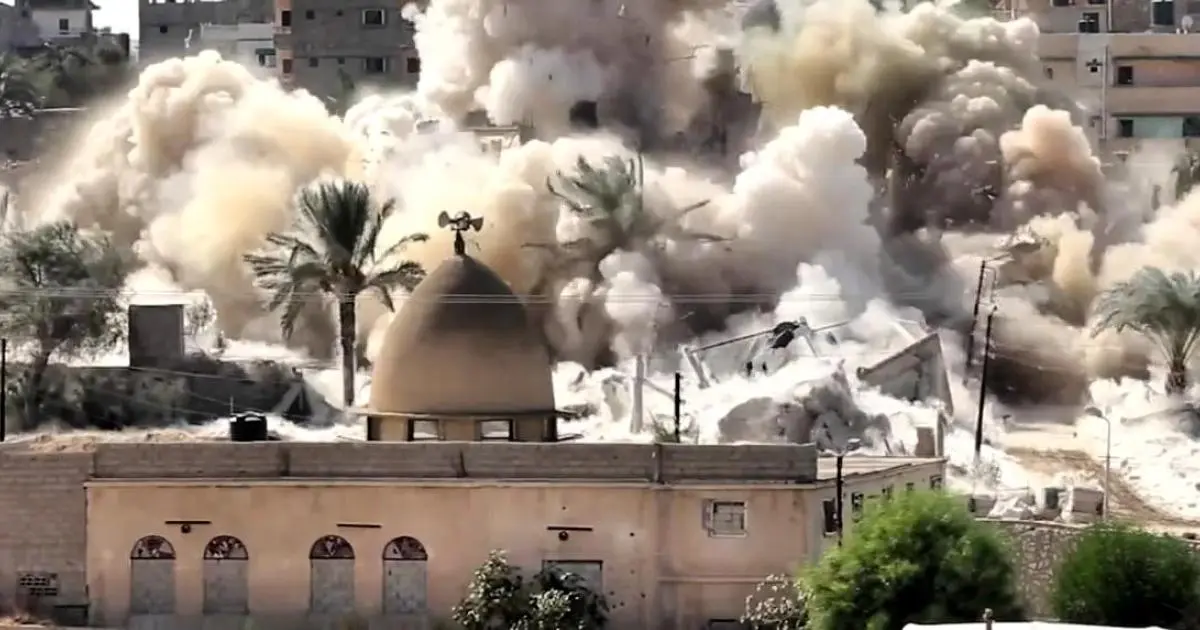
The complex web of Middle Eastern geopolitics, Rafah Gate emerges as a crucial player, serving as a linchpin for regional diplomacy amidst a backdrop of uncertainty and shifting alliances. Situated between Gaza and Egypt, Rafah Gate holds the potential to shape the course of regional dynamics, offering both challenges and opportunities for stakeholders seeking to navigate the intricate political landscape.
At its core, Rafah Gate embodies the aspirations of the Palestinian people for freedom and self-determination. As Gaza’s primary gateway to the outside world, the crossing represents a lifeline for residents who have endured years of blockade and isolation. Access to essential services such as medical treatment, education, and commerce hinges on the operation of Rafah Gate, making it a symbol of hope amidst adversity for Palestinians seeking to improve their lives and pursue their aspirations.
Yet, Rafah Gate is not merely a conduit for humanitarian relief; it is also a strategic asset with significant geopolitical implications. Egypt, as the custodian of the crossing on its side, wields considerable influence over its operation and accessibility. The Egyptian government’s approach to Rafah Gate is shaped by a complex interplay of domestic considerations, regional dynamics, and international relations, as it seeks to balance security concerns with diplomatic imperatives.
In recent years, Rafah Gate has emerged as a focal point for regional diplomacy, with efforts to mediate conflicts and promote stability in the broader Middle East. The crossing serves as a venue for diplomatic engagements and negotiations, offering a neutral ground for dialogue between conflicting parties. Egypt, leveraging its strategic position and diplomatic clout, has sought to facilitate dialogue and reconciliation initiatives, using Rafah Gate as a gateway to foster cooperation and understanding among regional actors.
Moreover, Rafah Gate plays a critical role in addressing humanitarian crises and alleviating the suffering of vulnerable populations. International aid agencies and humanitarian organizations utilize the crossing to deliver essential relief supplies and assistance to Gaza, where access to basic necessities is often constrained by the blockade. Rafah Gate thus serves as a vital conduit for humanitarian aid, offering a lifeline to Gazans in need and demonstrating the potential for diplomatic engagement to address pressing humanitarian challenges.
Despite its potential as a catalyst for regional diplomacy and humanitarian relief, Rafah Gate is not immune to challenges and uncertainties. The crossing remains subject to periodic closures and restrictions, driven by security concerns and political tensions. The volatility of the region, including the ongoing Israeli-Palestinian conflict and the broader regional rivalries, poses obstacles to sustained diplomatic efforts and humanitarian initiatives at Rafah Gate.
Addressing the challenges facing Rafah Gate requires a multifaceted approach that prioritizes dialogue, cooperation, and respect for international law. Efforts to ease restrictions and facilitate movement through the crossing must be accompanied by broader diplomatic initiatives aimed at addressing the root causes of conflict and instability in the region. Moreover, international support and solidarity are essential for bolstering Egypt’s capacity to manage the crossing effectively and promote regional stability.
Crossing Rafah: A Journey Marked by Struggle and Resilience
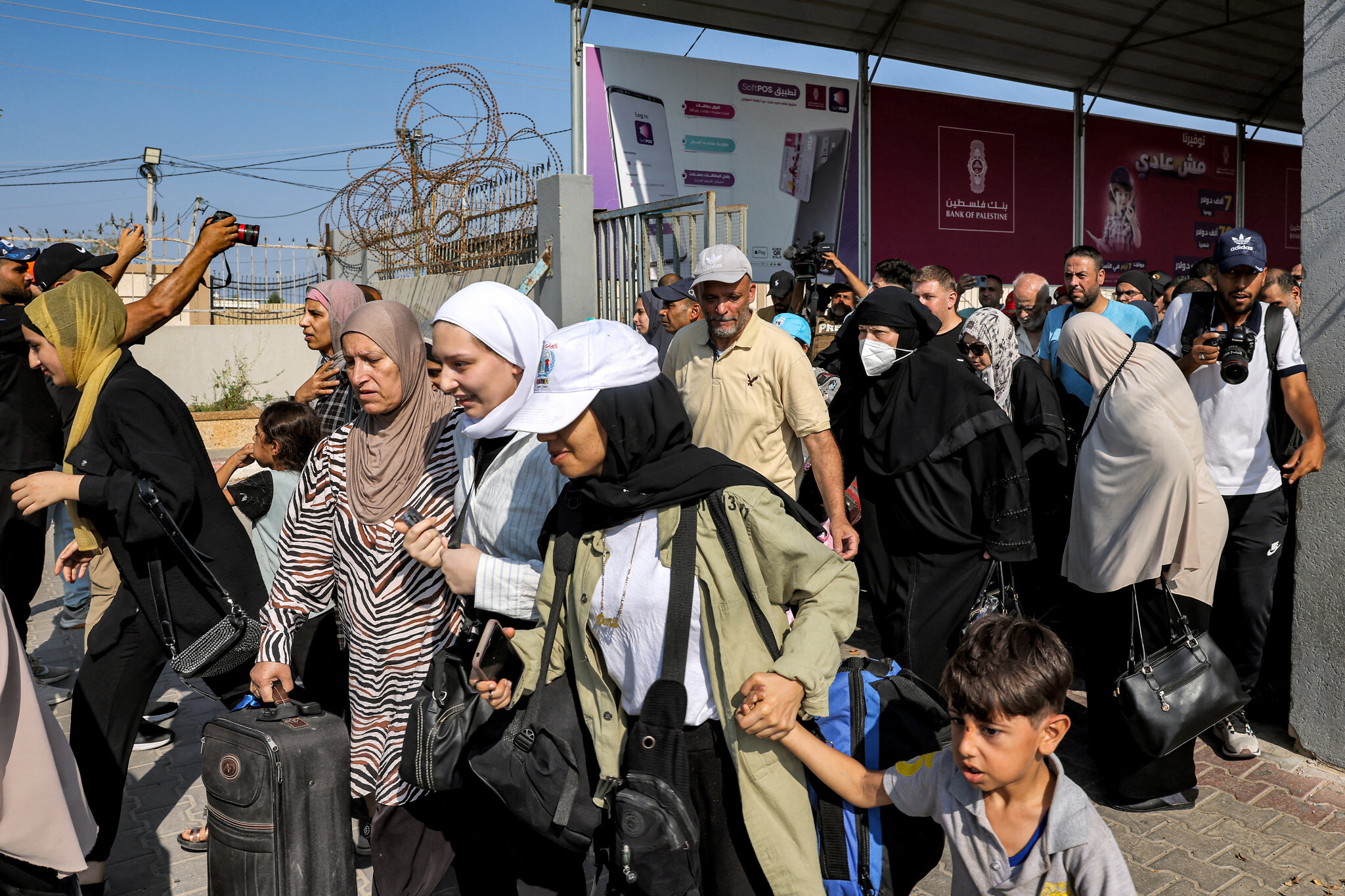
Crossing Rafah, the gateway between Gaza and Egypt, is a journey fraught with struggle and resilience for the Palestinian people. Situated at the intersection of political turmoil and human perseverance, Rafah embodies the hopes and challenges of a population determined to overcome adversity in pursuit of freedom and dignity.
For Palestinians living under the shadow of Israel’s blockade, Rafah represents more than just a border crossing; it symbolizes their aspirations for connectivity and mobility. Yet, the journey through Rafah is far from easy. Palestinians must navigate a labyrinth of bureaucratic hurdles, security checks, and political uncertainties, each obstacle a testament to the enduring struggle for dignity and rights.
The journey begins long before reaching the physical crossing itself. Palestinians must first obtain the necessary permits and permissions to travel, a process often riddled with delays and rejections. Families separated by political borders endure prolonged periods of anguish as they wait for clearance to reunite, their hopes tempered by the uncertainty of bureaucratic decisions.
Once at Rafah, Palestinians face a gauntlet of security checks and inspections, their movements scrutinized by Egyptian authorities wary of security threats. Long queues form at the crossing, with travelers braving the scorching sun and biting cold as they wait for hours, if not days, to pass through. Each delay is a reminder of the barriers erected to impede their journey, yet Palestinians endure with a resilience born of necessity.
Yet, amidst the struggle, there is also resilience. Palestinians at Rafah demonstrate a remarkable ability to persevere in the face of adversity, their determination unwavering despite the obstacles they face. Families separated by political borders find solace in the brief moments of reunion, cherishing the precious time spent together before parting once again. Students seeking educational opportunities abroad remain undeterred by the challenges of travel, their thirst for knowledge driving them to overcome every obstacle in their path.
Moreover, Rafah is also a site of solidarity and support, where Palestinians come together to help one another navigate the complexities of the crossing. Strangers become allies, offering guidance, assistance, and words of encouragement to those embarking on the journey. In these acts of solidarity, Palestinians find strength and resilience, forging bonds that transcend the physical barriers of the crossing.
Yet, despite the resilience of the Palestinian people, Rafah remains a site of struggle and hardship, a microcosm of the broader challenges facing Gaza and its residents. The blockade imposed by Israel, compounded by regional tensions and political dynamics, continues to exact a heavy toll on the lives of Palestinians, restricting their freedom of movement and stifling their aspirations for a better future.
Addressing the challenges at Rafah requires more than just easing restrictions or streamlining procedures; it demands a fundamental shift in the political dynamics that underpin the blockade and isolation of Gaza. It requires a recognition of the rights and dignity of the Palestinian people, and a commitment to addressing the root causes of conflict and insecurity in the region.
Amidst Tensions, Rafah Remains a Symbol of Palestinian Identity
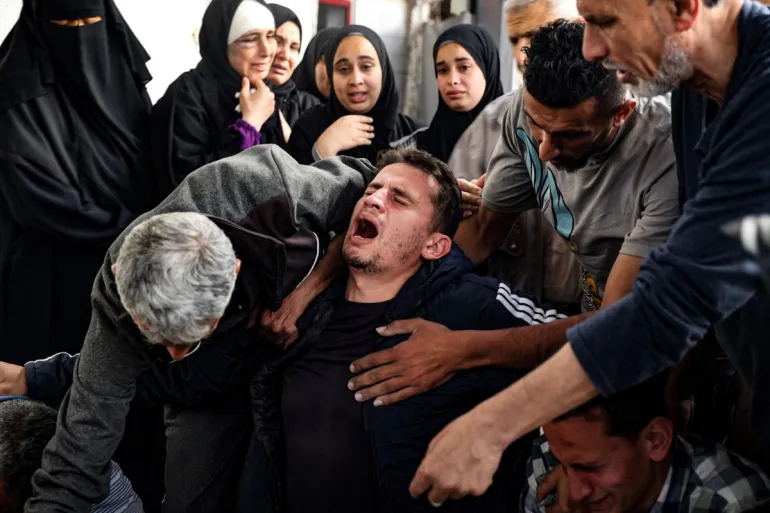
The heart of the tumultuous Middle East, where geopolitical tensions and regional rivalries often dominate the discourse, Rafah emerges as more than just a border crossing between Gaza and Egypt. It stands as a symbol of Palestinian identity, resilience, and unity amidst the challenges and uncertainties that define the Palestinian experience.
Rafah embodies the collective aspirations and struggles of the Palestinian people for self-determination and dignity. For generations, Palestinians have looked to Rafah as a gateway to the outside world, a conduit for connection and mobility in the face of the restrictions imposed by Israel’s blockade. It is through Rafah that Palestinians access essential services, pursue educational and economic opportunities, and maintain familial and social ties that transcend political borders.
Yet, Rafah is more than just a physical crossing; it is a living symbol of Palestinian identity and resilience. Despite the hardships imposed by the blockade and the uncertainties of regional politics, Palestinians at Rafah demonstrate an unwavering commitment to their collective identity and national aspirations. Families separated by political borders come together at Rafah, their reunions a testament to the enduring bonds of kinship and solidarity that unite Palestinians across geographical divides.
Moreover, Rafah serves as a site of cultural and historical significance for Palestinians, embodying the rich tapestry of their heritage and struggle. The crossing is a focal point for cultural exchange and expression, where Palestinians gather to share stories, music, and art that reflect their shared experiences and aspirations. Through cultural resistance and artistic expression, Palestinians reclaim Rafah as a space of belonging and defiance, challenging the narratives of occupation and dispossession that seek to erase their identity and history.
In the face of mounting tensions and political uncertainties, Rafah remains a beacon of hope and resilience for the Palestinian people. Despite the challenges posed by regional conflicts and geopolitical dynamics, Palestinians at Rafah continue to assert their right to freedom, dignity, and self-determination. Their steadfastness and resilience in the face of adversity serve as a powerful reminder of their enduring commitment to their identity and national aspirations.
Yet, Rafah’s significance extends beyond its symbolism; it is also a site of struggle and resistance against injustice and oppression. The restrictions imposed by Israeli and Egyptian authorities, coupled with the broader political dynamics of the region, pose formidable challenges to Palestinians seeking to exercise their rights and assert their identity at Rafah. However, Palestinians remain undeterred, steadfast in their determination to overcome every obstacle in their path and reclaim Rafah as a symbol of their collective struggle for justice and freedom.
Addressing the tensions at Rafah requires more than just easing restrictions or mitigating security concerns; it demands a fundamental shift in the political dynamics that perpetuate the blockade and isolation of Gaza. It requires a recognition of the rights and dignity of the Palestinian people, and a commitment to addressing the root causes of conflict and insecurity in the region.
Navigating Rafah: Balancing Security and Humanitarian Concerns
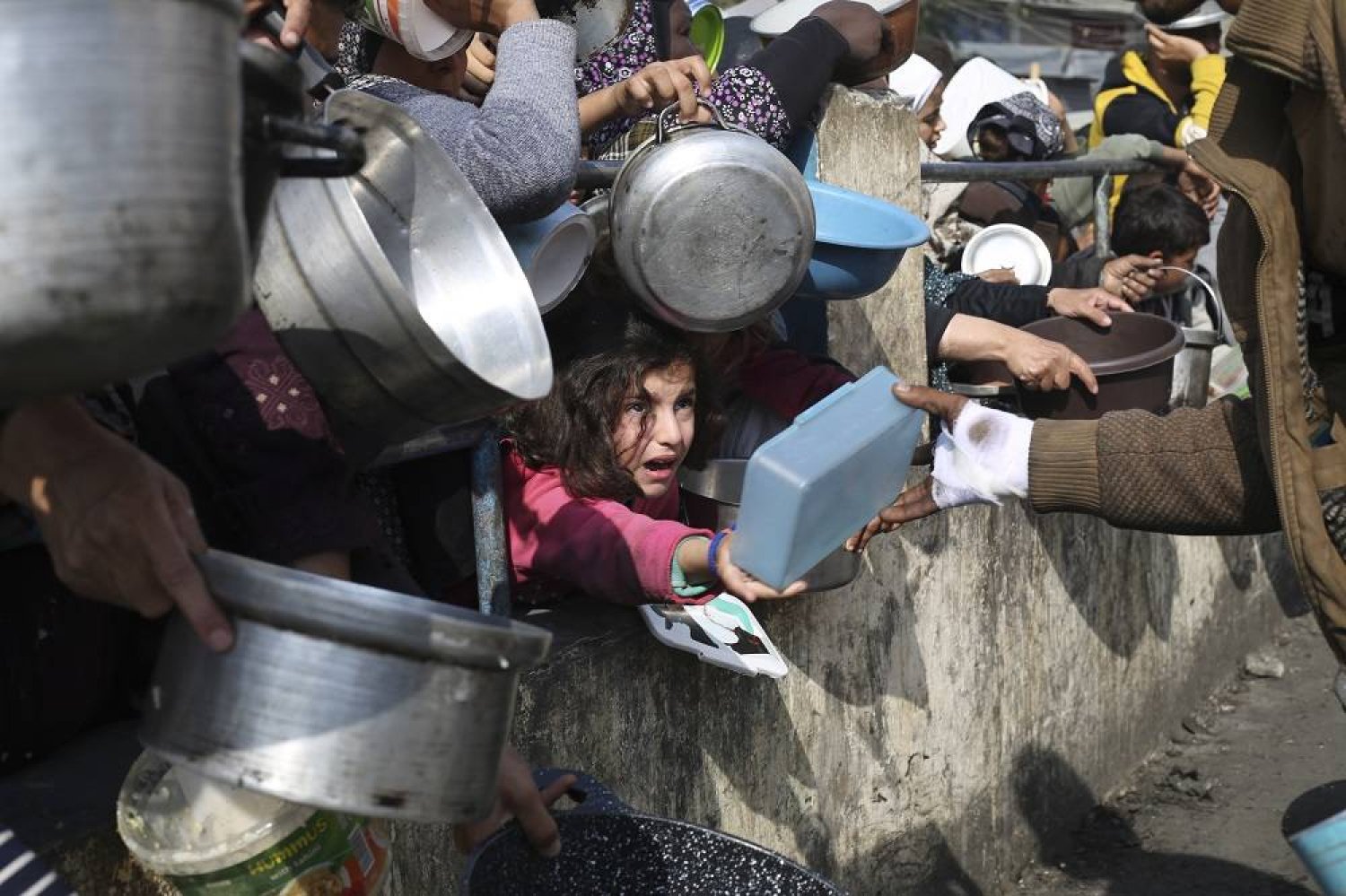
Rafah, the vital crossing between Gaza and Egypt, stands as a critical junction where the imperative of security intersects with the urgent need for humanitarian assistance. Navigating the complexities of Rafah requires striking a delicate balance between safeguarding security interests and addressing the humanitarian concerns of the Palestinian population.
Security concerns at Rafah are paramount, given its strategic location and the potential for illicit activities, including smuggling and the movement of militants. Egypt, as the custodian of the crossing on its side, faces significant pressure to prevent security threats from infiltrating its borders. In response, stringent security measures are often implemented, including rigorous inspections, surveillance, and periodic closures.
However, these security measures also have profound humanitarian implications for the residents of Gaza. The restrictions and closures imposed at Rafah hinder the movement of people and goods, exacerbating the already dire humanitarian situation in the besieged enclave. Palestinians seeking medical treatment, education opportunities, or family reunification are often left stranded, their basic rights and dignity compromised by bureaucratic obstacles and security concerns.
Balancing security and humanitarian concerns at Rafah requires a multifaceted approach that prioritizes the protection of civilians while addressing legitimate security threats. One essential aspect is enhancing security measures at the crossing through the deployment of advanced technology and intelligence-sharing mechanisms. By improving border surveillance and screening procedures, authorities can mitigate security risks without unduly impeding the movement of civilians.
Moreover, efforts should be made to streamline administrative procedures and facilitate the timely processing of permits and approvals for travel through Rafah. This includes ensuring transparency and accountability in decision-making processes, as well as providing adequate resources and support to enable efficient border operations. By reducing bureaucratic hurdles and delays, authorities can alleviate the humanitarian impact of security restrictions on the civilian population.
Additionally, international cooperation and diplomatic engagement are essential for addressing the root causes of insecurity at Rafah and promoting regional stability. Egypt, Israel, and the Palestinian authorities must work together, along with international stakeholders, to address shared security concerns and prevent the proliferation of weapons and extremist ideologies. Dialogue and cooperation are crucial for building trust and confidence among all parties involved, paving the way for sustainable solutions to the challenges facing Rafah.
Furthermore, efforts to address the humanitarian crisis in Gaza must be integrated into broader peace-building initiatives aimed at resolving the Israeli-Palestinian conflict. Sustainable peace and security in the region require addressing the underlying grievances and injustices that fuel insecurity and instability. This includes lifting the blockade on Gaza, easing restrictions on movement and access, and promoting economic development and social justice for the Palestinian population.
Conclusion
navigating Rafah requires a delicate balancing act between security imperatives and humanitarian concerns. By enhancing security measures while respecting the rights and dignity of the Palestinian population, authorities can mitigate security risks without exacerbating the humanitarian crisis in Gaza. International cooperation and diplomatic engagement are essential for promoting peace, stability, and prosperity in the region, ensuring that Rafah becomes a gateway to hope and opportunity rather than a source of insecurity and despair.
FAQs
What is Rafah Crossing?
Rafah Crossing is a border crossing between the Gaza Strip and Egypt. It serves as a primary entry and exit point for goods and people traveling to and from Gaza.
Why is Rafah Crossing significant?
Rafah Crossing is significant because it provides a vital link for Palestinians in Gaza to access essential services, medical treatment, education, and family reunification opportunities. It is often seen as a lifeline for the besieged enclave.
Who controls Rafah Crossing?
Rafah Crossing is controlled by both Egyptian and Palestinian authorities. Egypt controls the crossing on its side, while the Palestinian Authority has authority over the Gaza side.
What are the challenges at Rafah Crossing?
Challenges at Rafah Crossing include security concerns, bureaucratic hurdles, periodic closures, and restrictions imposed by Egyptian and Israeli authorities. These challenges often hinder the movement of people and goods and exacerbate the humanitarian crisis in Gaza.
How are security and humanitarian concerns balanced at Rafah Crossing?
Balancing security and humanitarian concerns at Rafah Crossing requires implementing stringent security measures while ensuring the timely processing of permits and approvals for travel. International cooperation and diplomatic engagement are also crucial for addressing root causes of insecurity and promoting regional stability.
What efforts are being made to address the challenges at Rafah Crossing?
Efforts to address the challenges at Rafah Crossing include enhancing security measures, streamlining administrative procedures, promoting international cooperation, and integrating humanitarian concerns into broader peace-building initiatives aimed at resolving the Israeli-Palestinian conflict.
How can the international community support efforts to improve conditions at Rafah Crossing?
The international community can support efforts to improve conditions at Rafah Crossing by providing humanitarian aid, advocating for the lifting of the blockade on Gaza, and promoting dialogue and cooperation between all stakeholders involved in the region.


